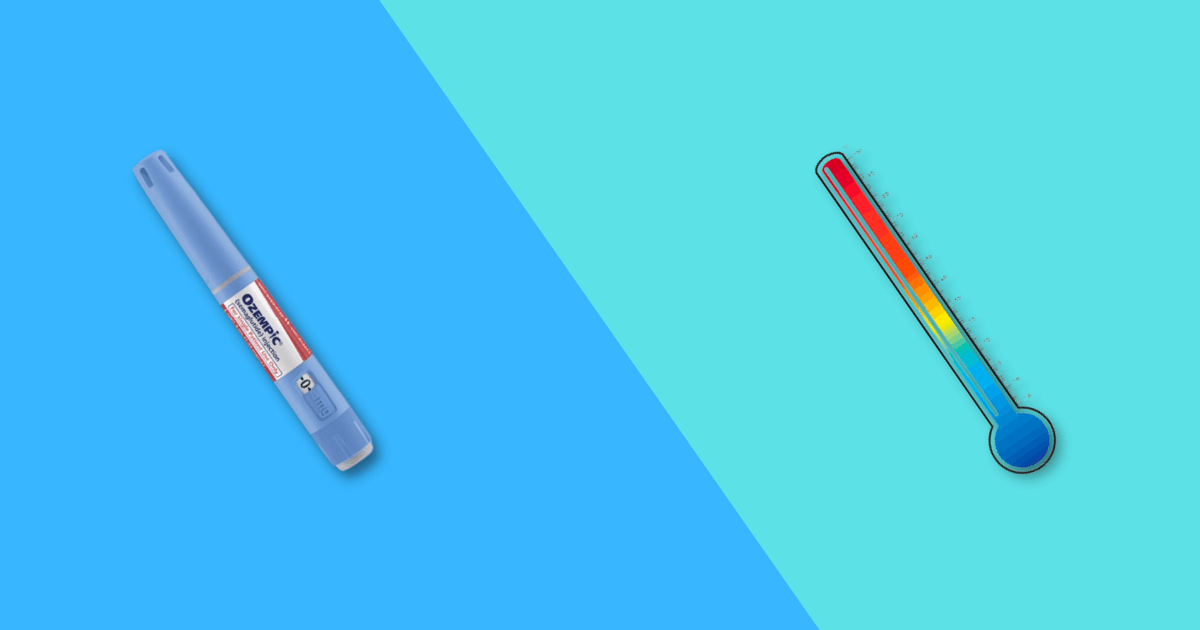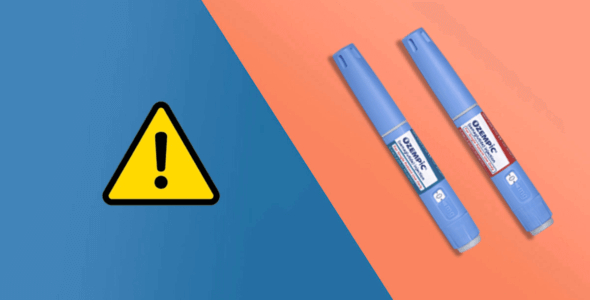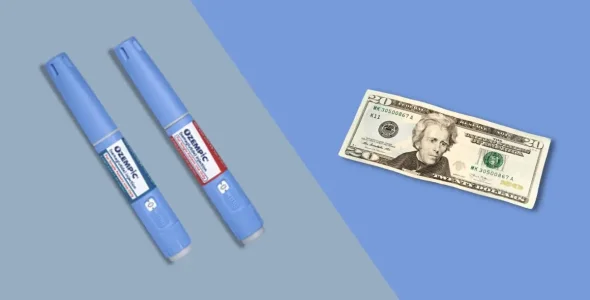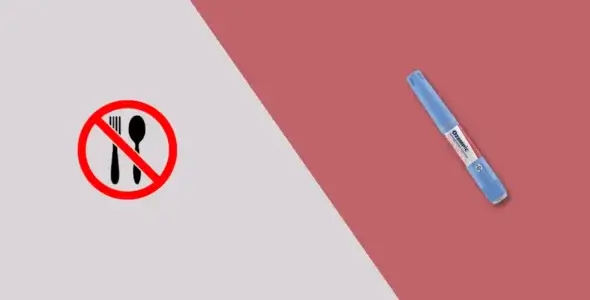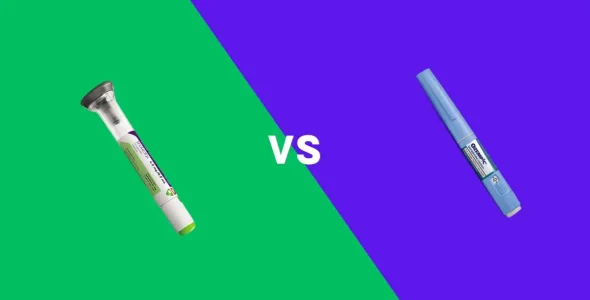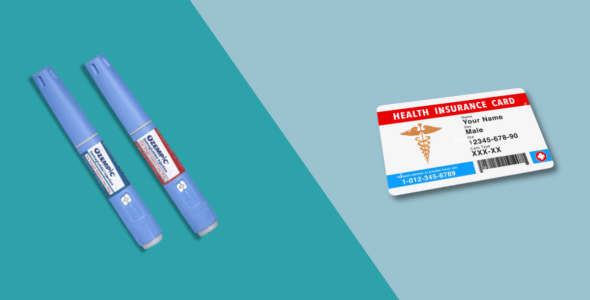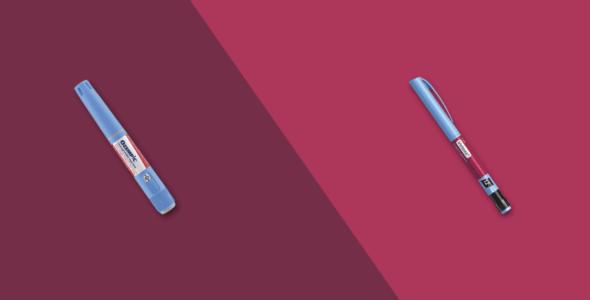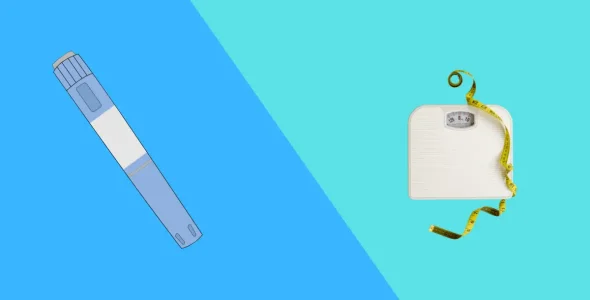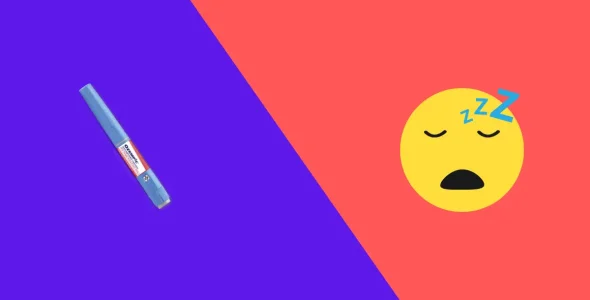Does Ozempic need to be refrigerated?
Ozempic storage simplified: Refrigerate before first use, but after? The answer might surprise you.
Key highlights
- Before first use, Ozempic should be refrigerated at 36°F to 46°F (2°C to 8°C).
- After first use and for up to 56 days, Ozempic can be stored at room temperature 59°F to 86°F (15°C to 30°C) or refrigerated at 36°F to 46°F (2°C to 8°C).
- Keep Ozempic pens in the original container when stored in the refrigerator and do not store them near the refrigerator cooling element.
- Do not freeze Ozempic or use the medication if it has been frozen, even if it has been thawed out.
- Always keep the pen cap on when not using the medication and avoid exposure to direct heat and sunlight.
- If stored properly, Ozempic pens can be used until their expiration date (EXP). Once empty or expired, the Ozempic pens should be properly disposed of.
Ozempic (semaglutide) is a glucagon-like peptide-1 (GLP-1) receptor agonist used to lower blood sugar levels in people with type 2 diabetes and off-label for chronic weight management in people with overweight or obesity. It is also used to reduce the risk of major adverse cardiovascular events in adults with cardiovascular disease.
When it comes to storage requirements, Ozempic generally needs refrigeration—but there are exceptions.
Proper storage of Ozempic is essential to ensure the medication remains effective. If stored incorrectly, such as being exposed to extreme heat, freezing temperatures, or light, Ozempic may lose its potency.
Exposure to extreme temperatures, light, or improper handling can alter the medication’s chemical composition, potentially reducing its therapeutic benefits and even posing safety risks.
Wondering if Ozempic needs refrigeration? Learn when to refrigerate Ozempic pens, how to store them after opening, and travel-friendly storage tips to maintain effectiveness.
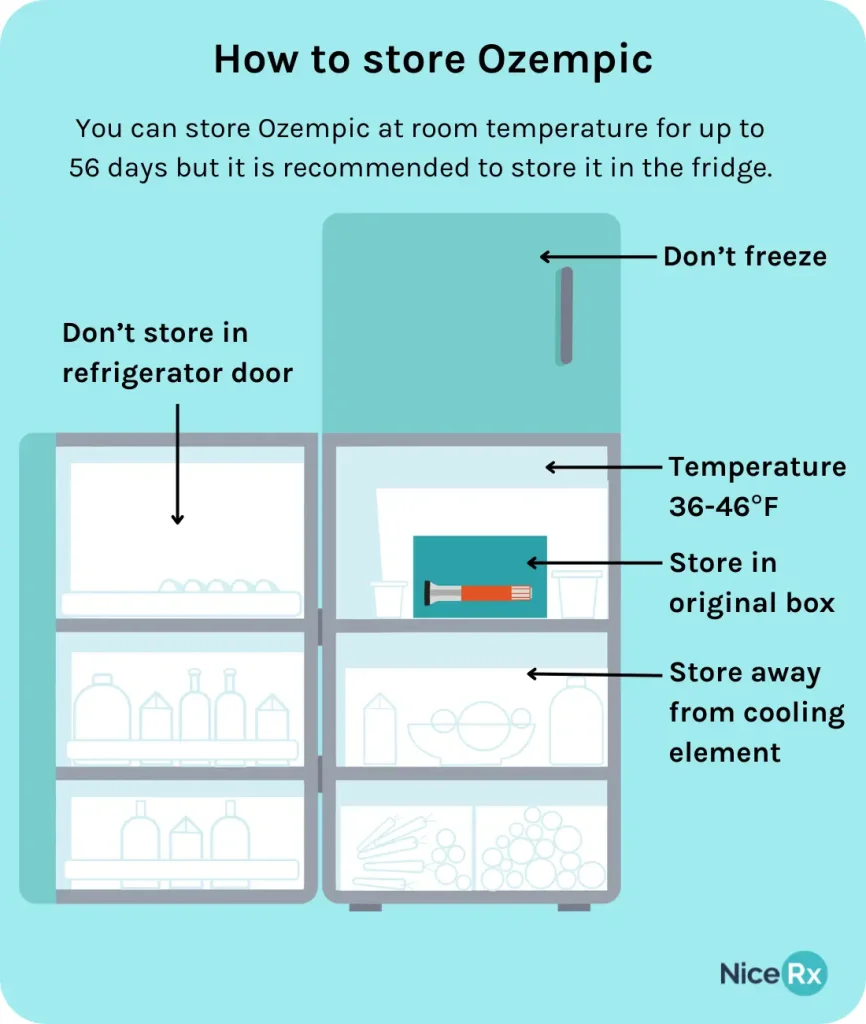
Does Ozempic need refrigeration?
Yes, you should keep unopened Ozempic pens in the fridge (36°F to 46°F or 2°C to 8°C) until you’re ready to use them or until expiration. Storing them between 36°F and 46°F helps keep the medicine fresh and working properly.
Don’t store your Ozempic pen in the fridge door, because the temperature changes when the door opens and closes.
Also, keep the pen away from the cooling part of the fridge (usually at the back or top of the fridge), because it might get too cold or even freeze. If the pen freezes, the medication can change and may not work well due to changes in its chemical composition. Novo Nordisk, the company that makes Ozempic, says to throw the pen away if it has been frozen.
If kept in the fridge and not opened, Ozempic pens can be used until the expiration date listed on the box.
Opened Ozempic pens can be kept at room temperature (between 59°F to 86°F or 15°C to 30°C) or in the fridge (between 36°F to 46°F or 2°C to 8°C) for up to 56 days.
No matter if you keep your opened Ozempic pen in the fridge or at room temperature, make sure to keep it away from heat and light. Always put the cap back on after each use to protect it from light.
Never freeze Ozempic, and like unused Ozempic pens, opened Ozempic should be kept at a controlled temperature because extreme heat or cold can make the medication less effective or potentially unsafe to use.

What happens if Ozempic is accidentally frozen or left at room temperature?
If Ozempic is accidentally frozen or left at room temperature for more than 56 days, it may no longer be effective or safe to use. Freezing the pen can change the medicine’s chemical structure, making it less effective. When left at room temperature for too long (over 56 days after opening), the active ingredient (semaglutide) may also start to break down and lose its potency.
No matter how you store the pen, the medicine inside should always be clear and colorless. You can check the color by looking at the window of the pen near the tip when the cap is off. If the medicine looks discolored, or if the pen feels too warm or frozen, contact your doctor or pharmacist for medical advice before using it.
If you’re unsure about your medication, it’s always best to check with your healthcare provider first. If you use a pen that wasn’t stored properly, it might not work as well. If you notice any signs that the medicine isn’t working, like high blood glucose, it could mean the pen is no longer effective.
What happens if Ozempic is left unrefrigerated?
It depends on whether the pen has been opened and used.
If you’ve already used at least one dose of your Ozempic pen and it was left out overnight, you can still use it. Once opened, Ozempic pens can be kept at room temperature (59°F–86°F) for up to 56 days.
Ozempic should always be kept in the fridge until you use it for the first time. If you accidentally left the pen out overnight before using it, talk to your pharmacist or doctor before using it. They might suggest you throw it away and use a new pen, especially if it was left in a hot or cold place like a car.
A temperature change could affect how semaglutide works. If you’re unsure whether your Ozempic is safe to use, you can call the manufacturer at 1-800-727-6500 for help.
Can you inject Ozempic cold?
Yes. You can use Ozempic right after taking it out of the fridge. It’s safe to inject when it’s cold, but it might sting a little more.
To make it more comfortable, you can keep your pen at room temperature after opening it. If you’re starting a new pen, you can let it sit out at room temperature to warm up before using it. Just don’t put the pen in the sun or try to heat it some other way, as that can damage the medicine.
How to store Ozempic correctly
To make sure your Ozempic works properly, here are some easy storage tips:
- Always store unopened pens in the fridge.
- Avoid placing them in the freezer, near the cooling element, or on the door shelves.
- Keep it away from the fridge’s cooling parts (usually in the back or top of the fridge), because those areas can get too cold.
- Once opened, you can keep the pen at room temperature (59°F–86°F), but make sure to keep them away from light and heat. Avoid storing them in places like a car or bathroom.
- Never freeze Ozempic. If it freezes, don’t use it.
- Even if refrigerated, discard any remaining medication after 56 days of use.
- Keep away from direct sunlight and excessive heat.
- Always put the cap back on the pen when you’re not using it.
- For long trips, pack the pen in a cool pack to maintain the correct temperature, but never freeze it.
Ozempic at room temperature: Short-term storage and exceptions
Once opened, Ozempic can be safely stored at room temperature (59°F–86°F) for up to 56 days.
Room temperature storage for Ozempic is acceptable during travel and right before you inject it.
You can inject Ozempic right after taking it out of the fridge, but it’s also possible to take it out 30 minutes before your dose. This can help reduce the stinging that can happen when injecting cold Ozempic.
When storing Ozempic at room temperature, it’s important to store the pen within temperature limitations. The pen should be stored at a temperature (59°F to 86°F) to ensure the medication remains effective.
Excessive heat and direct sunlight exposure can damage the medication, so it’s important to store your Ozempic pens correctly to keep them safe and effective. Always put the pen cap back on when you’re not using the pen to protect it from heat and direct sunlight.
What happens if Ozempic isn’t stored properly?
If you don’t store your unopened Ozempic pens in the fridge before using them, they might not last until their expiration date. The manufacturer can only guarantee the pen will last until expiration if it’s stored properly according to the instructions.
How long your Ozempic pens last can depend on how long they were kept out of the fridge. If your new pen was only out for a short time, it might still be okay to use. For advice, contact your pharmacist or call the manufacturer at 1-800-727-6500.
If the medication in the pen isn’t clear, colorless, and particle-free, throw the pen away.
Ozempic and travel
If you’re traveling with unopened pens, use an insulated travel case (like the ones used for insulin pens) to keep the medication cold and effective. For an opened Ozempic pen, you can store it in an insulated container or at a steady room temperature (59°F–86°F), just like you would at home.
When flying, keep your Ozempic separate from the rest of your carry-on luggage during security checks. The Transportation Security Administration (TSA) allows you to bring diabetes medications and supplies through security checkpoints. It’s also a good idea to bring the medication container with your prescription label. Make sure to store Ozempic in your carry-on, not in your checked bag, because checked luggage can get delayed or lost, and you can’t control the temperature in the plane’s cargo hold.
When traveling by car, follow the same rules. Keep unopened Ozempic pens in an insulated travel pack or ice packs, making sure they don’t freeze. If you’re traveling with open pens, you don’t need to refrigerate them but keep them away from high heat or extreme cold. Avoid leaving them in a hot car or trunk, especially if the car is in direct sunlight.
When you get to your destination, put your unopened pens in the fridge for the rest of your trip. For opened pens, store them just like you would at home.
How to dispose of Ozempic
Ozempic comes with Novofine pen needles, and you should use a new needle for each injection. After you’re done injecting, don’t throw the needles in the trash. Instead, put them in a special sharps disposal container approved by the FDA for safe disposal of needles and syringes.
To make disposal easier, Novo Nordisk has a free sharps disposal program. You can fill out a request form online, and they will send you a safe FDA-approved container with instructions on how to return it once it’s full.
You can also make your own sharps container by using a strong household plastic container with a tight, puncture-resistant lid, like a laundry detergent bottle. Make sure it follows your local rules for disposal. The FDA also suggests that you check for nearby drop-off sites for sharps, which may include doctors’ offices, hospitals, pharmacies, health departments, and police or fire stations.
Does Ozempic expire?
Yes, Ozempic expires. It usually lasts for 24 months from the date it was made, as long as it’s stored correctly in the fridge (36°F–46°F). You can find the expiration date on the box and each pen, next to where it says ‘EXP’.
Once you open an Ozempic pen, it can only be used for up to 56 days after the first use, as long as it’s stored properly at room temperature (59°F–86°F) or in the fridge.
If you use Ozempic as prescribed and finish one pen before opening the next, you shouldn’t have extra medicine. To be safe, write down the date when you open each pen, so you remember to throw away any unused medication after 56 days.
How to use Ozempic pens
Like other GLP-1 drugs (Wegovy), Ozempic is a weekly injection used for reducing blood sugar levels and also used off-label to reduce body weight. If you’re using your Ozempic prefilled pen for the first time, you can ask your doctor or pharmacist for advice or check the instructions from the manufacturer.
Here’s how to inject the Ozempic pen correctly:
- Wash your hands with soap and water and remove the cap from the Ozempic pen.
- Put a new needle on the pen (always use a new needle and don’t share needles).
- Clean the skin where you’ll inject with an alcohol swab and let it dry completely.
- If it’s your first time using the pen, check the flow by turning the dose dial until you see the flow-check symbol. Then, press the dose button until a drop appears at the needle tip. (You only need to do this the first time.)
- Turn the dose dial to select your prescribed dose.
- Insert the needle under your skin at the injection site (abdomen, thigh, or upper arm).
- Press the dose button and keep it pressed until the dose indicator reaches 0 mg.
- Hold the button down and leave the needle in your skin for 6 seconds to make sure you get the full dose.
- While still pressing the button, carefully pull the needle out of your skin.
- Remove the needle and throw it away safely in a sharps container.
- Put the pen cap back on and store the pen in the fridge or at room temperature.
You can take Ozempic with or without food, and be sure to change the injection site each week. If you have any questions, ask your pharmacist or healthcare professional.
What happens if you use expired Ozempic?
It’s not clear what happens if you inject expired Ozempic, as this hasn’t been studied. The expiration date tells you how long the manufacturer guarantees the medicine will be safe and effective, as long as it’s stored correctly and unopened. The expiration date is set based on tests conducted by the manufacturer that check how factors like temperature, humidity, and time affect the medicine quality.
After a drug’s expiration date, the active ingredient may not work properly. This is especially true for medicines like Ozempic that need to be kept in the fridge. Expired medicine could break down or change, which might cause unexpected risks or side effects. If your Ozempic has expired, or if it looks discolored or has solid bits in it, it’s a good idea not to use it and contact your pharmacy or doctor to get a new supply.
Frequently asked questions (FAQs)
Can Ozempic be frozen?
No. Do not freeze Ozempic or store the pens directly next to the cooling element in your refrigerator. Once frozen, the solution in Ozempic will break down and not regain its original efficacy. Ozempic is not safe for use after it has been frozen, even if it has thawed, and you should throw it away and get a new pen.
Can I refrigerate Ozempic after opening?
You do not need to refrigerate Ozempic after opening, as it can be stored at room temperature for up to 56 days. However, if you prefer to store Ozempic in the refrigerator, that is fine, but make sure not to store it near the cooling element and ensure the temperature is 36°F and 46°F (2°C and 8°C).
Can Ozempic be left in a hot car?
No, Ozempic should never be left in a hot car as heat can ruin the medication.
How do I know if my Ozempic is bad?
You can tell that your Ozempic might be bad if the liquid inside the pen window looks cloudy, discolored, or has clumps or particles in it. Also, if the pen feels too warm, has been frozen, or was stored incorrectly, it’s best not to use it and check with your pharmacist or doctor.
What do I do if my Ozempic pen is exposed to heat?
If your Ozempic pen was exposed to heat, don’t use it, as high temperatures can affect how the medication works. Contact your pharmacist or healthcare provider to verify if you need a replacement.
How do I dispose of used or expired Ozempic pens and needles?
Put your Ozempic pen and needle in an FDA-cleared sharps disposal container. Do not throw it away in the household trash.
A household container can be used if you don’t have a specific FDA-cleared container for sharps disposal. If you are using another container, it should be made from heavy-duty plastic and can be securely closed in a stable, upright, and leak-proof container. The lid should be tight and puncture-resistant. It should be labeled properly to warn people of hazardous materials that are inside the container.
Can I use my Ozempic if I left it out overnight?
If your Ozempic pen was already opened and left out at room temperature (59°F–86°F), it should still be safe to use as long as it’s within the 56-day limit. If the pen was unopened and left out overnight in a hot or very cold place, you should check with your pharmacist or doctor before using it.
Bottom line
BEFORE FIRST USE: Ozempic should be stored in the refrigerator (between 36°F to 46°F or 2°C to 8°C) until you use it for the first time.
AFTER FIRST USE: After you have used the Ozempic pen for the first time, Ozempic can remain stored in the refrigerator or kept at room temperature (between 59°F to 86°F or 15°C to 30°C) for up to 56 days.
Ensuring Ozempic’s efficacy through proper storage depends on whether the pen is unopened or already opened.
Unopened Ozempic pens should be stored in the fridge (36°F–46°F) until you use them or until the expiration date. Once you start using a pen, you can keep it at room temperature (59°F–86°F) or in the fridge.
Neither opened nor unopened Ozempic pens should be frozen or exposed to heat or direct sunlight.
Opened Ozempic pens expire 56 days after you start using them. Always check the expiration date on the pen and write down the day you opened it. Unopened pens can be used until the expiration date on the label, as long as they’re stored the right way.
If you’re not sure the medication was stored correctly, or if the liquid looks discolored or feels warm or frozen, don’t use it. Instead, talk to your doctor or pharmacist to find out what to do next.
If you have questions about how to store Ozempic, talk to your pharmacist or doctor. They can give you advice, explain possible side effects, and answer your questions to help you get the best results from your diabetes medication.
Proper Ozempic storage ensures you get the full benefits of your treatment. When in doubt, consult your pharmacist or Novo Nordisk’s for clarity.

